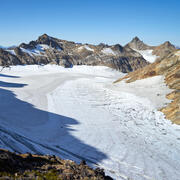Remote Sensing
Sensors mounted on satellites, planes, drones, and ground-based platforms monitor land cover regionally and globally. The Climate R&D Program uses a range of remotely sensed data (including satellite imagery, historical photographs, and land-surface feature maps) to document landscape change and drivers, improve projections of future change, and identify impacts on infrastructure and society.













